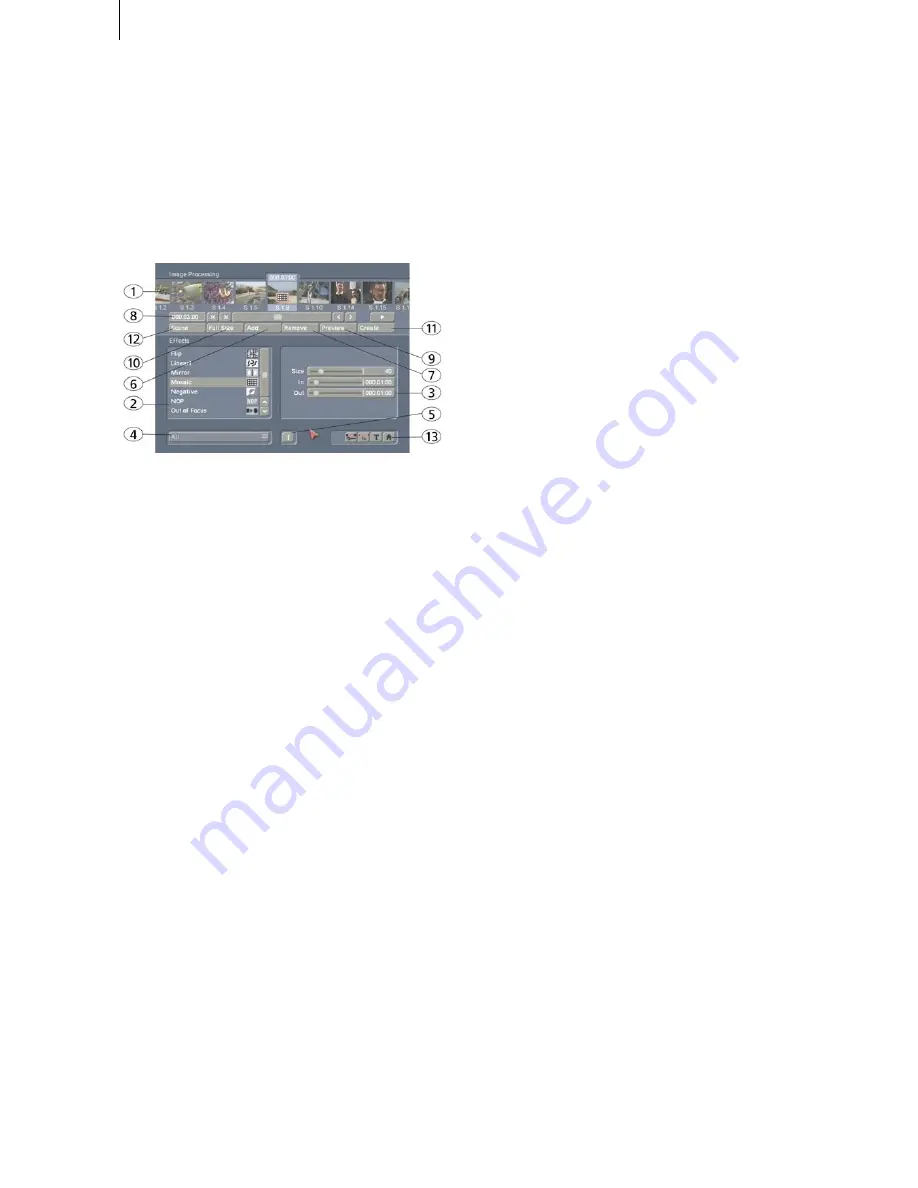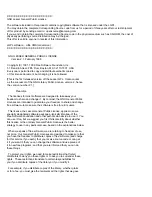
62
63
effect is applied to a particular segment of the
storyboard.
In the Image Processing effects screen only one
scene is selected. The selected scene represents
the approximate range for the intended effect.
You can process just one image, or an entire
scene, or in the extreme case the entire story-
board.
(1)
The long-term effects menu displays the
familiar storyboard. You now bring the scene
(to which you would like to add effect) into the
center of the storyboard.
A difference to the storyboard from the "
Edit
"
menu is the Play button. In the Image Proces-
sing effects screen the Play button does not play
the entire storyboard, only the selected scene in
the center. If an effect has been added, then the
length of the entire effect is played.
(2)
You can select an effect in the
effect list
. Eit-
her click on the effect directly so that it is high-
lighted by the dark-gray bar, or use the slider
or arrow buttons in order to move the desired
effect to the correct position. If you do use the
slider, then after selecting the effect you must
press the left trackball button so that the light-
blue bar again changes to dark-blue.
Note
: In going to print, not all effects were HDV
capable and could therefore not be made avail-
able in HDV projects.
(3)
After you have chosen an effect that is avai-
lable with further options, the corresponding
ef-
fect options
are displayed in the field to the right
next to the effect list. There you can define, for
example, the colors and intensity of the effect.
(4)
This button allows you to switch the effect
list to single points. The button offers the
following three functions.
The function "
All
" shows all image processing
effects, which are to be found in the system.
"
Default
" shows the image processing effects,
which are integrated in the system, and "
Op-
tional
" only shows the image processing effects,
which have been installed afterwards.
If you have installed additional image process-
ing effects, they are also shown in this list (un-
derneath the three settings listed above). Thus it
is possible just to see only one image process-
ing effect type in the list.
(5)
Clicking on the "
i
" button, you’ll get informa-
tion about the image processing effect activated
in the effect list. If it is an additional effect, the
window "
product information
" opens, which of-
fers a description of the effect. Is the effect to be
found a standard effect, the product information
refers to the manual.
(6)
With the "
Add
" button you can apply the
selected and configured effect to the scene
located in the center. The effect symbol appears
in the scene outlined in red. If you select a new
long-term effect even though there is already
one in the scene, the new effect replaces the old,
without you having to click again on "
Add
". The
length of the newly inserted effect corresponds
at first to the length of the actual scene, but can
be changed with the button located to the abo-
ve-left (item
(8)
).
(7)
A click on the "
Remove
" button removes the
inserted effect from the storyboard. If you want
to replace the current effect with another, simply
select the new effect and it will replace the one
in the storyboard. In this case you don't have to
click on the "
Remove
" button.
(8)
After you have inserted a scene the scene
length is displayed in this button (and thus the
maximum length of the effect). Click this button
so that the "
Specify Range
" menu opens and
you are given four selection options. You can
let the effect run "
1 sec at beginning
", "
1 sec at
end
", over the "
complete scene
", or over a speci-
fiable "
Range
".
Choosing the function "
Range
" opens a Trim
menu, similar to "
Trim
" from the "
Edit
" menu,
in which you can set the applicable range for
the effect. The effect will begin at the In point
(first frame of the scene), and end at the Out
point (the last frame). Some segments of the
storyboard cannot be selected. The reason is
that other effects are already defined. Overlap-
Содержание SMART EDIT 5
Страница 1: ...User manual SMART EDIT 5 2nd edition ...
Страница 100: ...274 06 06 ...
















































